HSE ART GALLERY Opens Unusual Exhibition ‘Sonic Fiction: Designing Sound Spaces’
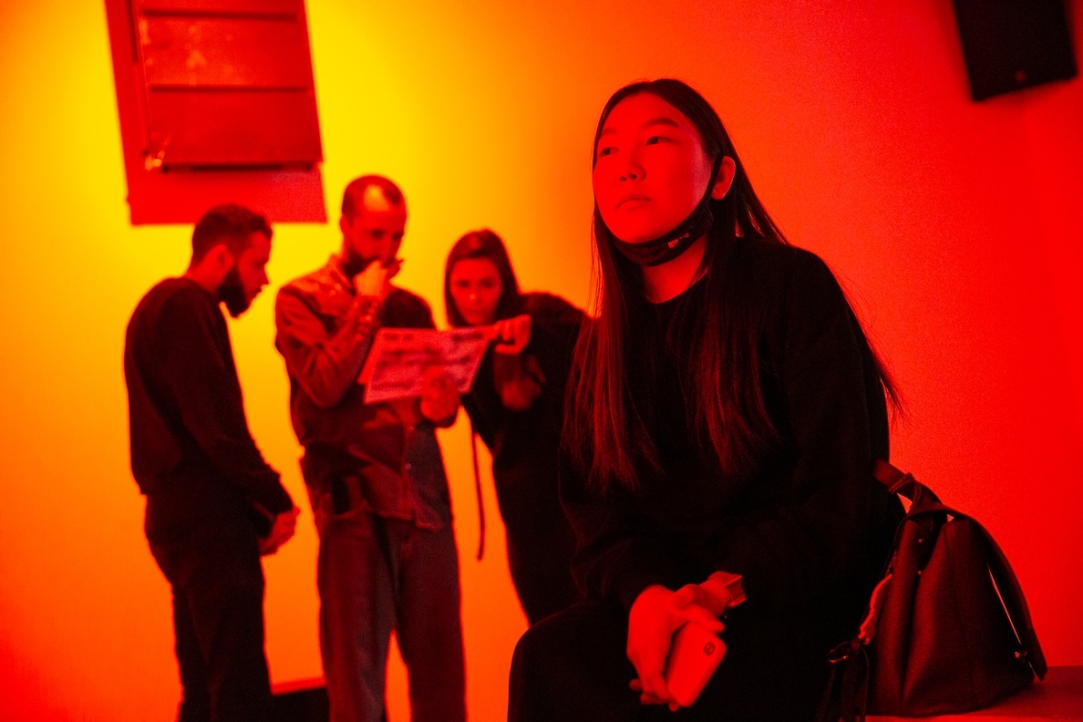
Noah’s Ark below decks, a utopia about the happy coexistence of all life forms, the universe of tinder-dating — HSE ART GALLERY’s new exposition has turned the gallery into a sound theatre, a mix of fictional and real worlds, where visitors are transported by sound. The unique sound exhibition ‘Sonic Fiction: Designing Sonic Spaces’ was created by students of HSE Art and Design School (of the ‘Sound Art and Sound Design’ Programme and others) as well as famous Russian and foreign artists. The artists and curators told the news service about the concept of the exposition, their work, and sound and neural networks
Stas Sharifullin, exhibition curator and head of the Master’s Programme track in Sound Art & Sound Studies
In developing the exposition theme, we started thinking about what happens to space when it becomes filled with sound, and we realized that it changes completely.
That is, thanks to sound, we can programme space in such a way that a person closes his eyes and feels like they are in one of the strange—fictional or real—universes that the students devised.
It’s also about the imaginary potential of sound: how it can work in terms of associations, when you’re not provided a certain picture and you already know how to think, but when you can think for yourself and create your own universe with the help of associations. It turns out that we encourage people to use their imagination.
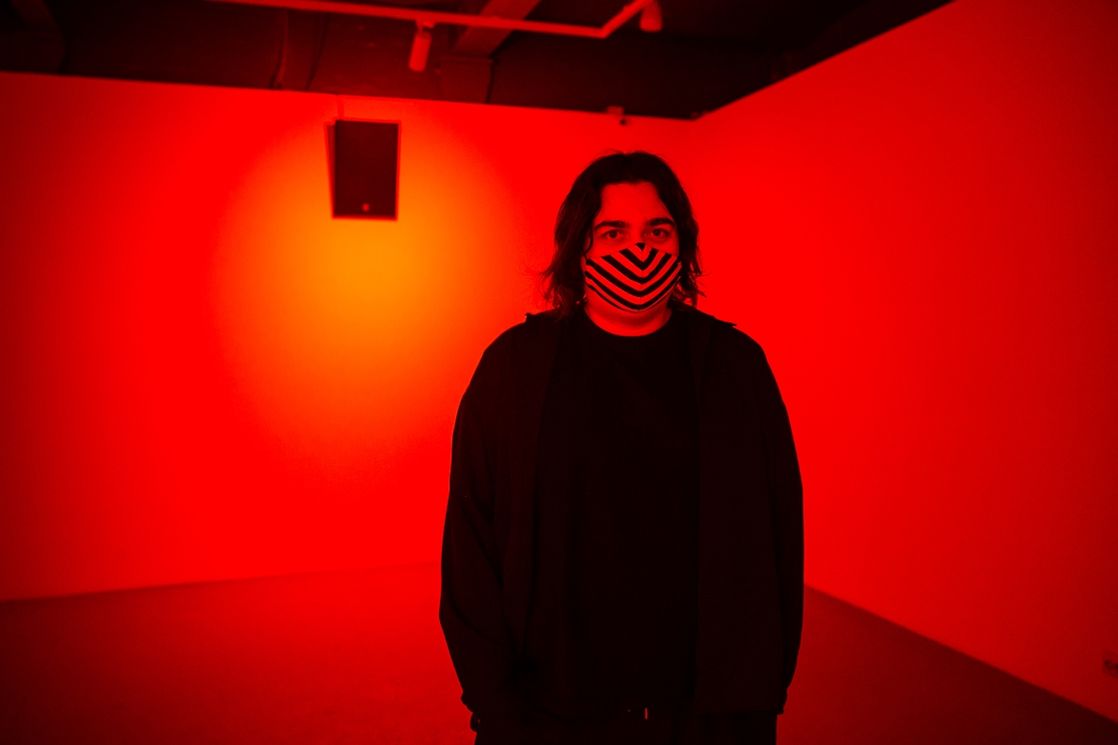
Working with sound is much broader than the framework of contemporary art. There is no additional threshold of entry here, as sound works directly with the body. You can approach our sound exhibition in different ways: as strange music that you can listen to on a strange system or as just some interesting sensory experience (I think these are difficult times, and few people manage to just come, immerse themselves, and listen to some speech like this). But on the whole, there aren't many exhibitions today that are devoted exclusively to sound. So we can also walk around the halls and listen to how each of the artists has realised the idea of a multi-channel sound system, that is, how they fill the space with their work.
The exhibition is attended by undergraduate and Master’s programme students from the HSE Art and Design School, and not just those who study in the sound profiles. We were very surprised that they came and did such high-quality work. They are fantastic. It was also great that in the blind auditions it was sometimes difficult to distinguish between the work of a student and that of an experienced artist. And I think that's a very big achievement, and we, as the people who taught them, should also feel a certain amount of pride, though of course we shouldn't be too proud.
Sofia Afanasyeva, author of ‘3-5-5-3-9-9’, fourth-year student of Design and Modern Art track
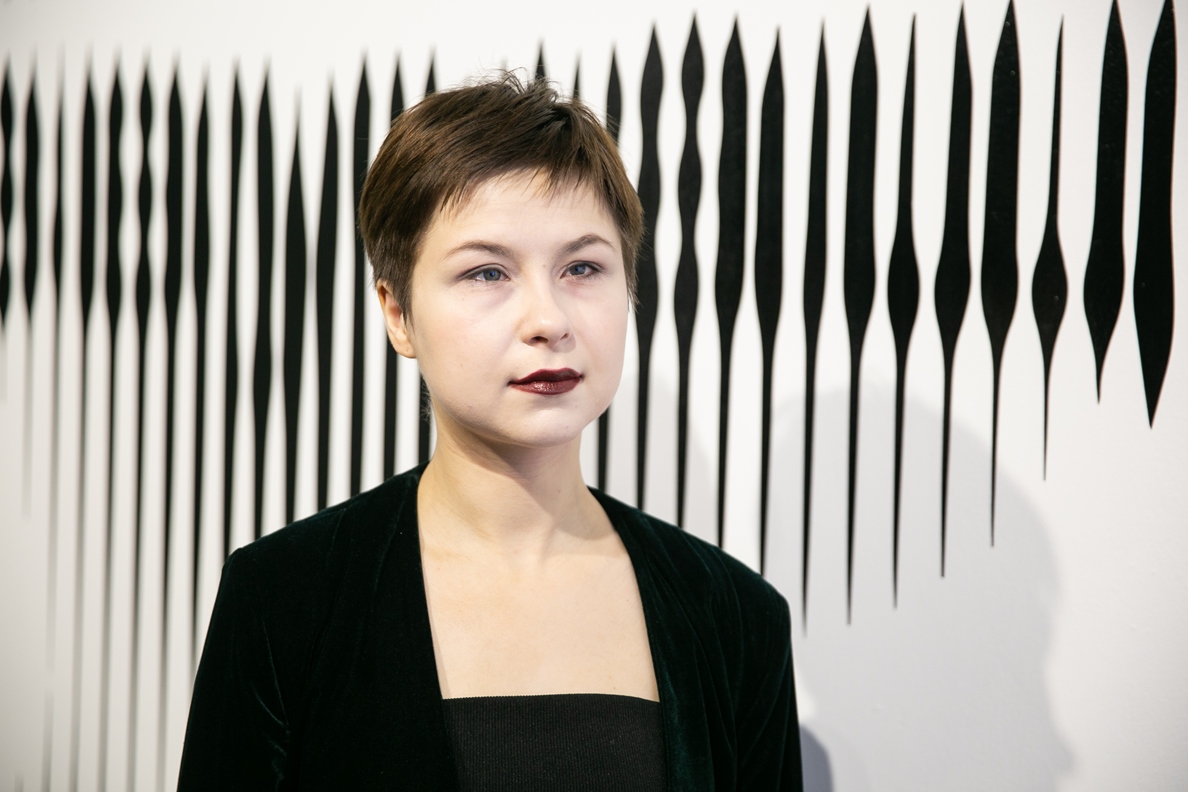
In the last year I have had a lot of different recordings and an understanding of exactly how I want to work with sound. So the exhibition seemed like a great opportunity for me to try myself at a new format: I've played live music several times, but the exposition is something so much cooler at the intersection of music, sound, and contemporary art.
When I saw the theme of the exhibition back during the Open Call (real and imaginary worlds), I had a million ideas of different universes, but I thought that I should do something not immediately obvious. So, my project ‘3-5-5-3-9-9’ is about the world of a person with OCD (obsessive-compulsive disorder). This is an acquaintance of mine, a real-life person whom I observed.
His life consists of small, even imperceptible rituals: to close the window, he has to pull the handle nine times, to open his wallet — zip and unzip it three times. Seeing this repetition, this ritualism, I likened them to a sound
A rhythm is created from these repetitive actions, which creates his fictional world and his real world at the same time, without which he cannot exist.
Participation in any exhibition is very useful for expanding one’s social network. For example, I found it interesting to communicate with the students of the ‘Sound’ programme. Besides, I gained technical knowledge: I had four meetings with a sound engineer, who told me a lot about sound theory, frequencies, etc. It was a very useful experience for me.
Olga Zubova, exhibition curator and first-year student of the Master's Programme in Contemporary Art Practice (Sound Art & Sound Studies track)
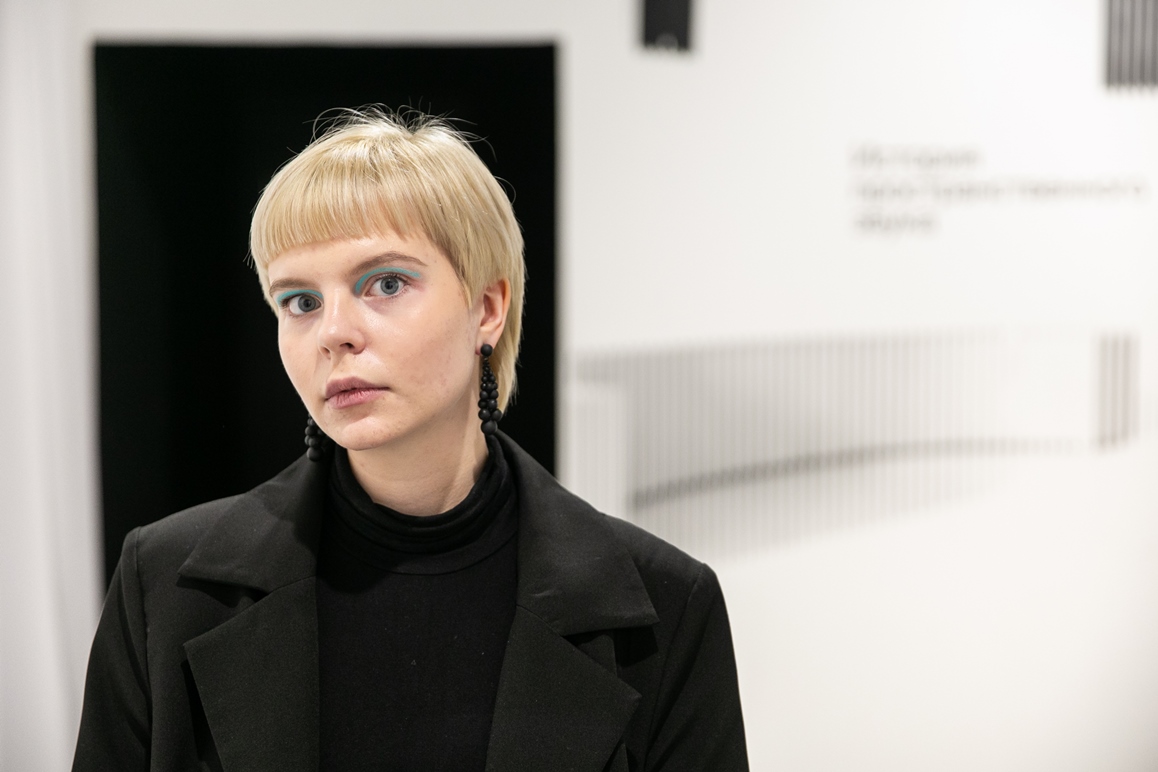
We often talk about utopias and dystopias: this is a classic form that is usually rendered in texts or images, etc. But least of all we talk about sound [of fictional worlds], so here it was important for us to focus the audience’s attention on it.
Sound is important: it plays a huge role in our lives, we are surrounded by it 24/7, we constantly hear things, we never exist in a silent space
At our exhibition, the emphasis on sound becomes maximised, and everything visual is minimised as much as possible. Usually we hear sound in a stereo format, but here it takes up the whole space and immerses you in a certain environment. This immersive experience is cool; it’s unique. I remember that the first time I listened to spatial sound, I was blown away. I was sitting in the enormous space of the Alexandrinsky Theatre with no fewer than 60 speakers, and I didn't realise where I was, what was happening to me, it was such a powerful experience. Here at the HSE ART GALLERY we demonstrate how space and sound can coexist. Plus, we have an unusual system here: the classic eight-channel system, but the arrangement of the speakers is unusual: an entire ecosystem was created especially for this exhibition.
This is the first time I have been a curator, and my job was to write the concept, the idea, and the texts—it’s something I’ve had experience with before. But overall, the interaction with the artists, the other curators, and the exhibition organisers was new and enlightening. Because even though we divided up the tasks, all the curators were involved at every stage of the work.
Lisokot (Varya Pavlova), author of I WANT/I HAVE TO SHARE MY LIFE WITH YOU, singer, artist, and poet
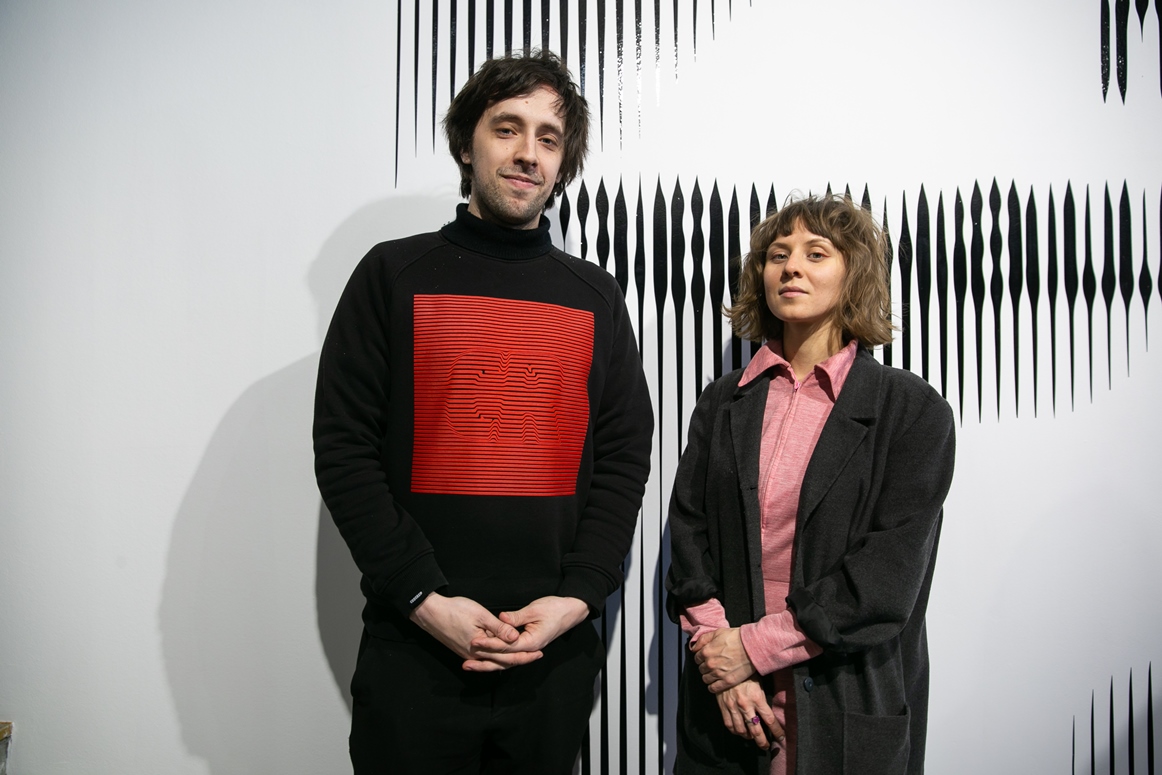
It all started when my colleagues and I started the EOLA Experimental Opera Laboratory last year. As part of it, the team of the Cyberchayka Laboratory of Media Art and Technology developed and trained neural networks for my voice. Several hours of data (singing songs, free improvisation, singing phonemes, etc.) were processed using an algorithm. This process got me thinking not just about the future of music, but about the interaction between artist and instrument. So I decided to animate my partner, to make the neural network an artist equal to myself, and to create with it a semi-improvisational piece, an aural dialogue.
It is clear that a neural network does not have consciousness, but just as in ancient times, when people did not understand what they were dealing with, they animated it, deified it; I tried to do approximately the same thing in my work
By the way, when we got the results of the algorithm's processing of my voice, we were amused: the neural network took my personality into account and started to sound like me. It’s probably a coincidence, but it is interesting in the context of my work in animating the neural network.
Lyosha Popov, Cyberchayka Laboratory participant
We had an assignment: to mimic a voice with a neural network. It sounds simple, but in fact it’s a complicated process that we have to do for probably another 100 years, and it’s still not going to look perfect. The thing is, there’s an incredible amount of information in the human voice, and we have really just started to work out what’s in it. We needed to get a voice similar to Varya’s so that we could hear her character traits, her timbre — the signature of the material she sang to us.
Over the course of this work, we got at least three versions of the neural network, which worked differently. If the first version was similar only in intonation, the second one conveyed an interesting emotion. At the same time the third version turned out to be similar on the whole, but the neural network sometimes sang nonsense. We have formed an ensemble of differently imperfect copies of Varya, which live by themselves and each try to do something on their own. We are very interested in what will turn out next, so we will continue to work on the project.
Andries Gandrabur, exhibition curator and head of the ‘Sound Art and Sound Design’ Programme at the HSE Art and Design School
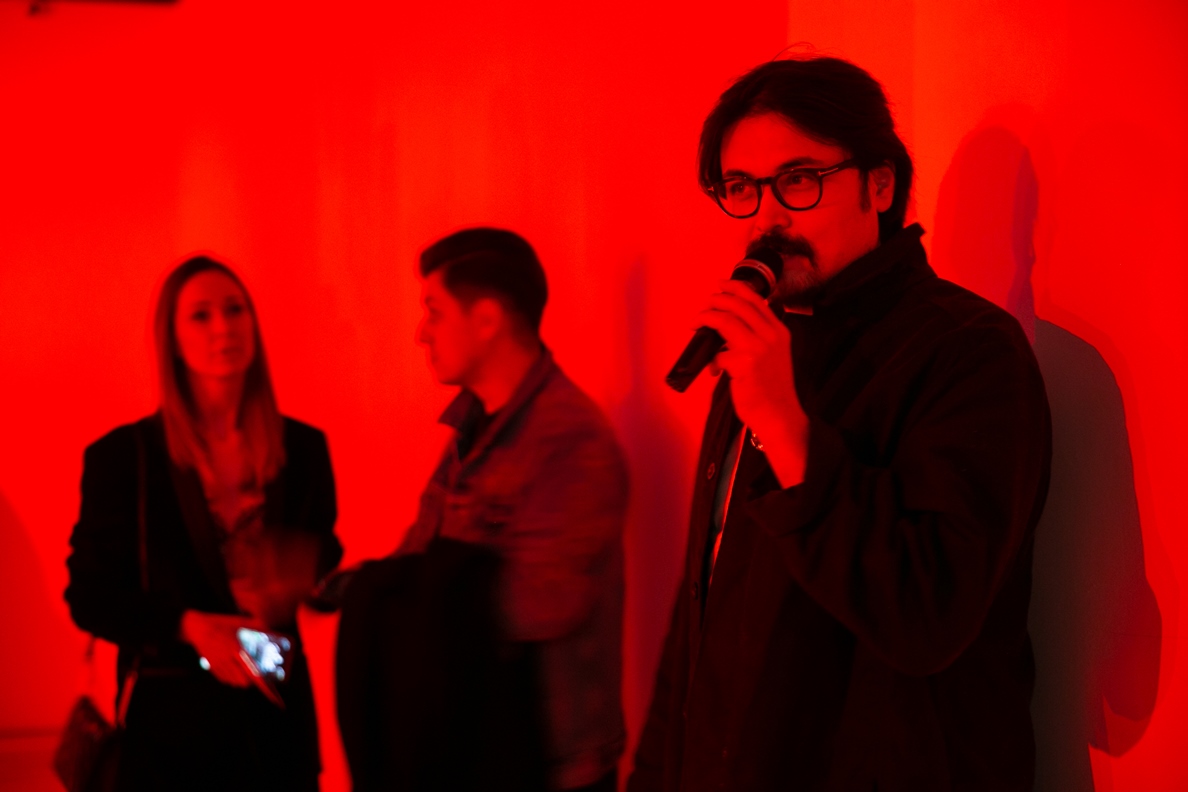
When you’re here, at our exhibition, it’s better to keep your eyes closed. Or at least sometimes you should allow yourself to close your eyes and let yourself drift away from the space. I recommend that visitors don’t stop, don’t sit still, because this is not the kind of exhibition where you just sit and listen. It’s more of a journey, an itinerary, because your angle of vision or angle of perceiving this acoustic world is constantly changing. Here the air is filled with different frequencies, and you get into different worlds in each piece. And when you enter a new world, you’re not going to stand still, are you? You will more likely be exploring it by taking some kind of route. So, I suggest our guests walk, listen, sit down when they get tired, and walk again. And this way they can make their way through all the sound halls. It also seems to me that there should be less talking. Besides, if our audience wants to discuss something, we have a third room, not the sound one, where we have detailed information about the history of such sound formats.
Andriesh Gandrabur
Stanislav Sharifullin
See also:
Stella Art Foundation Exhibition Featuring Works of HSE Art and Design School Teachers to Last until May 26
The Stella Art Foundation has launched the exhibition 'About All the Things That Live There’ by Curator of the Master’s track ‘Video Art’ at HSE Art and Design School Alexandra Mitlyanskaya, Coordinator of the ‘Photography’ track at HSE Art and Design School Evgenia Solomatina, as well as artist Nina Kotel. The project is curated by Alexey Korsi.
Exhibition by HSE Art and Design School Students Now Open at Fabrika Centre
The Fabrika Centre for Creative Industries is hosting a graduation exhibition by bachelor’s students of Contemporary Art at the HSE Art and Design School. In the exhibition titled ‘Freedom of Absurdity’, the early-career artists present their interpretations of melancholy. The exhibition is open to visitors until April 21, 2024, and admission is free of charge.
‘Winnie-the-Pooh and All, All, All’. Poster Exhibition of Graduates of HSE Art and Design School
Until March 15, the exhibition ‘Winnie-the-Pooh and All, All, All’ will be held in the Children's and Youth Department of the Central City Youth Library named after M.A. Svetlov. Graduates of the continuing education programme ‘Illustration. Basic Course’ decided to take a fresh look at A. A. Milne's beloved fairy tale by drawing incredibly colourful posters.
‘Our Exhibition Is an Attempt to Meet the Challenge of Conceptualism in the Most Radical Form’
On January 18–February 4, 2024, the philosophy and contemporary art exhibition ‘Exercises in Conceptualism’ took place at the Gallery Na Peschanoy (part of the Moscow City Galleries Network). The event posed a philosophical question about the phenomenon of conceptualism through the study of the artistic, institutional, epistemological (cognitive) and ontological (existential) status of explication, an important and little-studied element of modern art.
‘It’s Important to Combine Painting with Modern Technology’
On January 19, the HSE ART GALLERY hosted the opening of a new exhibition, ‘Majors, Minors. Aftertone’, which will last until March 10. The exhibition features works created by students of the HSE Art and Design School as part of their courses on modern painting and creating art projects using photography and neural networks. The exhibition was curated by artists and teachers Olga Chernysheva, Vladislav Efimov, as well as art critic Nicolas Audureau.
Photography Week at the HSE Art and Design School: From Documentary to Fashion Photography
Photography Week took place on November 20–25 at the HSE Art and Design School. As part of the festival, the HSE ART GALLERY presented works by students of the Photography track from recent years, while CREATIVE HUB hosted a conference titled ‘Photography: More than Art.’
Fashion for Strong Women: Emancifashion Exhibition Takes Place at HSE University
In early November, the Emancifashion exhibition, dedicated to the representation of women in art and fashion, took place at HSE University in Maly Trekhsvyatitelsky Pereulok. The event, organised by first-year students from the HSE Media Communications programme, featured works created by students from the Fashion Design programme of the HSE Art and Design School.
Moving in Circles or Breaking Out: New Exhibition at HSE ART GALLERY
From September 18 to November 19, the HSE ART GALLERY is hosting a new exhibition from the HSE Art and Design School: ‘Going Over Old Ground?’ Its curator is Alexandra Mitlyanskaya, artist and head of the Screen Arts and Video Art tracks at the HSE Art and Design School. Guests will see experimental cinema, video art, and animation created by students and graduates of the school.
‘Light and Air’ Exhibition of HSE Art and Design School Opens at Arkhangelskoye Museum
On May 17, the ‘Light and Air’ group exhibition project was opened by students of the HSE Art and Design School at the Arkhangelskoye Museum Estate. The exhibits created by the university’s contemporary artists in training reflect on how people are connected with nature. The exhibition is open until July 9.
‘Screen Arts. Roll Call’ Exhibition of the HSE Art and Design School Opens in Kaliningrad
The ‘Screen Arts. Roll Call’ cultural and educational project of the HSE Art and Design School will be exhibited at the Baltic branch of the Pushkin State Museum of Fine Arts in Kaliningrad until July 16, 2023. The project is a continuation of an HSE ART GALLERY exhibition held in September 2022. The exhibition presents a dialogue between three generations: pioneers of video art in Russia, young classicists, and students of the HSE Art and Design School who are uncovering new possibilities in screen arts.


